Introduction

With the 70-180mm 2.8 Tamron completed its “Reasonable Trinity” in 2020. Before the announcement I expected a 75-150mm 2.8 but we got an even bigger zoom range instead. Will there be more surprises? Let us find out in this review!
Update: a new version of this lens has been released in late 2023, you can find its review here.
Sample Images




Contents
Specifications
I am reviewing the final production model here which has the following specifications:
- Diameter: 81 mm
- Field of view: 13°42′ to 34°21′ (diagonally)
- Length: 149 mm
- Weight: 805g (without hood or caps)
- Filter Diameter: 67 mm
- Number of Aperture Blades: 9 (slightly rounded)
- Elements/Groups: 19/14


- Close Focusing Distance: 0.27m (70mm) – 0.86m (180mm)
- Maximum Magnification: ~1:2.0 (70mm) – 1:4.6 (180mm)
- Mount: E-mount
You can also have a look at the official page.
The lens is now available from amazon.com | amazon.de | B&H | ebay.com | ebay.de (affiliate links) and the price is $1199/1299€.
Disclosure
The Tamron 70-180mm f/2.8 Di III RXD was kindly provided free of charge by Tamron Germany for reviewing purpose for a duration of 8 weeks.
Handling / Build Quality
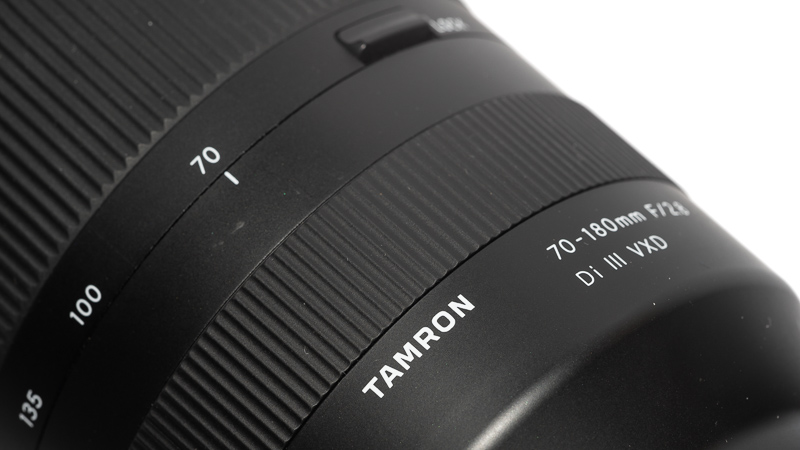
Keeping in mind the low weight and reasonable price tag you should neither expect an all metal construction nor as fancy polycarbonate that is used for the Sony GM lenses. The build quality does not disappoint though, the 70-180mm 2.8 feels pretty much exactly like the Tamron 17-28mm 2.8, so if you like that you will also like this.
The lens is shortest at the 70mm setting and extends by roughly 3 cm when set to 180mm.
The arrangement of the focus ring (close to camera) and zoom ring (front) is similar to that of the Tamron 17-28mm 2.8 Tamron and 28-75mm 2.8, good news, if you are using more than one of these. The zoom ring (~80° from 70mm to 180mm) is less stiff than it was on the 17-28mm 2.8 and can be moved with one finger only.
The focus coupling is of the non linear type, unfortunately.
Tamron includes a plasticky hood that can be mounted reversed for transport. There is neither a focus hold button nor an AF/MF switch to be found on the lens but there is a zoom lock lever for the 70mm setting. This sample did not exhibit zoom creep at all, but it may develope over time and then it is clearly nice to have, even though I would have preferred an AF/MF switch instead.
Tamron also says the lens features a “moisture-resistant construction” (including gasket at the bayonet) but you should be careful what you read into it. Being an extending zoom lens I am sure dust will still find its way inside and any losses or damage due to moisture/water do not seem to be covered by Tamron.

If you were already shooting in the “DSLR-era” the outer dimensions (but also the build quality) of this lens will rather remind you of the 70-300mm 4.5-5.6 zooms and not so much of the 70-200mm 2.8 zooms.
Autofocus
Bastians experience with the A7RII:
At closer distances (less than 0.7 m) at 70mm the autofocus does not work at all. This is the end of the zoom range with the high magnification and it is somewhat tedious to always have to switch to manual focus if your subject is closer.
This was also why I was greatly missing an AF/MF switch. If you are mainly using lenses that don’t have it and you already have mapped AF/MF switch to a custom button this may not bother you as much though.
Janniks experience with the A7RIV:
Using the A7RIV, the minimum focus distance at 70mm is also not accessible with AF at all. You have to use MF to make use of the macro potential. At 180mm, the MFD is accessible with AF-C and it also works fine there.
In general, AF was very snappy and accurate. To my positive surprise, it was also very quiet and unobstrusive. Tracking worked very well.
The sample below demonstrates the accuracy and speed of the AF in demanding situations. The bullfinch was jumping around in the middle of the dim bush but the AF still nailed it.
Vignetting


| 70mm | 180mm | |
|---|---|---|
| f/2.8 | 1.4 | 2.1 |
| f/4.0 | 0.7 | 1.3 |
| f/5.6 | 0.4 | 0.8 |
| f/8.0 | 0.4 | 0.6 |
Sharpness
infinity
70mm:
At the shortest focal length, the Tamron 2.8/70-180 performs impressively. Center and midframe are as sharp as it gets, even at f/2.8 and with 61MP. The corner profits slightly from stopping down to f/5.6 but I wouldn’t hesitate to use it wide open whenever there is need for it.

135mm:
In the middle of the zoom range, things get a bit complicated. There is a bit of field curvature that mostly shows in the extreme corner. If the lens is focused wide open on the center, corners need f/5.6 to get reasonably sharp. However, corners can be much sharper wide open if focused on. In case of doubt, I would recomemmend to stop down and focus on midframe for landscape images if possible. For other subjects, this is not relevant.
180mm:
At the long end, this lens performs just a tad worse than at 70mm. Center and midframe are already extremely sharp wide open, corners are just a bit behind and show a little bit of astigmatism. Midframe and corners show their peak performance at f/4.

Historically the f/2.8 zooms always performed best at the wider end and lost some bite at the tele end and this is also the case here. At 70mm sharpness is great from f/2.8 across the whole frame whereas at 180mm the corners benefit from stopping down to f/4.0.
Still, the lens is clearly sharp enough for any application imaginable. So don’t waste your time asking in the comment section if this lens or the 70-200mm 2.8 GM is sharper, differences are meaningless in the field here.
Keep in mind: at these distances heat haze and vibrations can have a big influence on slightly longer shutter speeds (meaning when shooting stopped down to f/8.0 or further).
close focus
70mm @ 0.27m
100% crops from center, Sony A7rII, refocused for every shot due to focus shift
180mm @ 0.86m
100% crops from center, A7rII, refocused for every shot due to focus shift
This lens does focus close on both ends of the zoom range but it offers a noticeably higher maximum magnification at the 70mm end (1:2.0) and image quality in the center wide open is also a bit better on the wide end.
This staggering minimum focus distance came at a cost though, the field curvature is massive here, short of some lensbaby lenses it is actually the highest field curvature I have ever seen.
If you subject is small and in the center this may not bother you, but if you are shooting an even remotely flat subject the usefulness of these magnifications will be severly limited.
Distortion
The lens shows slight barrel distortion at 70mm which turns into strong pincushion distortion at 180mm.
Correction values:
70mm = +2
135mm = -6
180mm = -14
The lens comes with correction profiles so the camera can already correct the distorion. There is a Lightroom profile available as well.
Sunstars
Sony A7rII | Tamron 70-180mm 2.8 Di III VXD | 70mm | f/11
In my experience, the longer the focal length of your lens, the more unlikely you are to encounter sunstars in your pictures. Nevertheless 70mm may still be used for more intimate cityscapes or landscapes with the sun on the edge of a mountain, so we have a close look here.
Due to 9 rounded aperture blades the sunstars are not very pronounced in the first place, but is seems the alignment of the aperture blades of this sample is really good, the length of the rays and distance to each other is very even, especially when dealing with smaller, farther away light sources.
As this is a highly subjective topic may have a look at this article to see which kind of sunstars you prefer.
Coma correction
70mm
180mm
100% crops from extreme corner, A7rII
As we have already seen in the sharpness section the Tamron 70-180mm 2.8 is a well corrected lens and coma is hardly an issue.
Bokeh
Close up
The close up bokeh is smooth and creamy with acceptable optical vignetting and no visible onion rings.


Mid-distance
Lenses is the class of the Tamron 2.8/70-180 are often used for full body portraits or subject isolation of larger objects in landscape photography. The transition zone between sharp and blurry areas is important in this situation. Generally, the foreground bokeh of this lens is more nervous than the background bokeh. This is favorable because the background often takes more space in the image. Bokeh is generally best at 180mm and worst in the middle of the zoom range where onion rings, outlining and cat eye shaped highlights become most visible. The quality of the bokeh is generally accetable and has a neutral, unobstrusive character. Nevertheless, there are specialist lenses like the Sony FE 1.4/85 GM that shine a lot more in this regard.
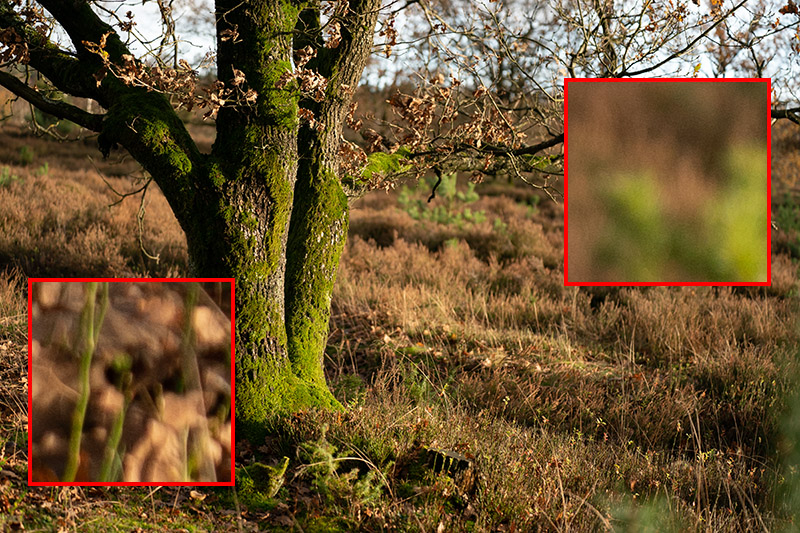


Stopped down
Thanks to 9 rounded aperture blades, highlights in the bokeh remain round and smooth stopped down. Bokeh at smaller apertures looks more smooth compared to wide open, onion rings are not visible.

Flare resistance
Flare resistance is generally good. Contrast remains high with the sun directly in the frame, the amount of ghostings is still acceptable.
The lens has the strongest vulnerability to veiling flare and ghosting if the sun is placed at the edge of the frame without the lens hood. Therefore it may be a good idea to use the lens hood in such demanding scenarios.
Sun inside the frame
Sun at the edge of the frame
In comparison to other lenses in this focal range, flare resistance is at the stronger side. Compared to my frequently used Sony FE 4.5-5.6/100-400 GM OSS, the Tamron 70-180 is much superior.
Chromatic aberrations
Lateral

Sony A7rIV | Tamron 70-180mm 2.8 Di III RXD | 135mm | f/11 | CA Extreme corner, 100% crop
Lateral CA are not present in any of the taken images.
Longitudinal



In line with its 17-28mm and 28-75mm siblings, Longitudinal CA (loCA) are very well corrected and therefore nothing to worry about. In the middle of the zoom range, there can be a hint of blue LoCA that is easy to handle.
Focus shift
70mm
33% crops from center, A7rII
180mm
50% crops from center, A7rII
At the minimum focus distance the lens shows a bit of a focus shift. Usually people will use this lens with working aperture, where this is absolutely meaningless. Only if you set your focus manually and then stop down afterwards this is something to be aware of. At 70mm you can see again the massive field curvature.
Alternatives
Update: have a look at the review of Tamron’s improved 70-180mm 2.8 G2 that features a more up-to-date alternatives section.
Sony FE 70-200mm 2.8 GM OSS:
The most obvious competitor and a lens none of us has personally used for a longer time. Considering it is not as hot as other manufacturer’s 70-200mm 2.8 lenses and it is very expensive I would rather get the Tamron lens reviewed here.
If you are mainly shooting sports and you need the most reliable tracking on you Sony A9II this may still be the lens for you – due to lack of better alternatives directly from Sony.
buy from amazon.com | amazon.de | ebay for $2598 (affiliate links)
Sony FE 70-200mm 4.0 G OSS:
As of November 2020 this Sony lens and the Tamron are priced pretty much the same. As this f/4.0 version is not nearly as hot as other manufacturer’s 70-200mm 4.0 lenses and it is heavier and bigger than the Tamron reviewed here despite being a full stop slower the only reasons I see to get the Sony are the buttons and the OSS. If that wasn’t obvious enough: get the Tamron here, seriously.
buy from amazon.com | amazon.de | ebay | B&H for $1398 (affiliate links)
Canon EF 70-200mm 4.0L:
If you are running on a tight budget getting a used Canon 70-200mm 4.0L can still be a good option, especially when you already have an AF adapter like the Sigma MC-11. The Tamron is obviously a stop faster, a bit more compact and offers better AF performance whereas the Canon is not focus by wire and at least offers an AF/MF switch as well as a focus limiter.
buy from ebay.com | ebay.de
| amazon.com | amazon.de | B&H for $450 used (affiliate links)
Zeiss Batis APO-Sonnar T* 135mm 2.8:
If you need a medium tele lens and prefer to use prime lenses, the Zeiss Batis 135mm 2.8 can be a decent option. Optically, this lens doesn’t leave much to be desired and has quite similar qualities as the Tamron 70-180mm 2.8 despite of being a bit better in every regard. Used and new prices have come down by quite to a more realistic level.
Sony FE 135mm 1.8 GM:
This lens is even more expensive than the Zeiss Batis 135mm 2.8 but adds also some unique qualities. The sharpness is even outresolving the sensor of the A7RIV wide open and the added speed allows for way more subject isolation and low light capability. The autofocus is also one of the fastest in the Sony world.
Conclusion
good
|
average
|
not good
|
Jannik:
The Tamron 2.8/70-180 DiIII RXD was a unobstrusive and reliable option in my pocket for the time that I used it. The lens was never complicated, neither in use nor in the processing of the results. This is definitely a compliment for a lens in a class of rather clumsy and sometimes complicated lenses. The decision to give up the internal zooming and 20mm at the long end and to allow high pincushion distortion at 180mm added a lot of portability.
In terms of image quality, the lens shines at the extremes with very high sharpness and decent bokeh. Image aberrations are generally not relevant and flare resistance is mostly good. The weakest spot is the mid of the zoom range where field curvature becomes visible and the bokeh is most distractive.
Although I understand the strive for a uniform appearance in a lens line, I strongly dislike the lack of any manual controls despite of the zoom and focus ring. Sigma demonstrates within its DN line, that this can be implemented without any issues and I hope that Tamron will also start to implement such things in further lenses as soon as possible.
Bastian:
Due to an accident that lead to a surgery I only got to spend limited time with this lens. When it comes to the optical qualities I have no reason to complain, this is a very compelling lens in terms of sharpness as well as bokeh and I did not manage to find a deal breaking flaw here. Especially compared to Sony’s 70-200mm options this is the only lens in this segment I could recommend to the potential buyer.
There is one thing though: I am aware Tamron was aiming for an affordable price point here, but I do wonder what would have been “the price” for including useful things like an AF/MF switch, focus hold button and maybe even a focus limiter.
And please get rid of that non linear manual focus implementation, seriously…
Update: a new version of this lens has been released in late 2023, you can find its review here. Long story short: all our points of criticism have been addressed.
The lens is now available from amazon.com | amazon.de | B&H | ebay.com | ebay.de (affiliate links) and the price is $1199/1299€.
Sample images









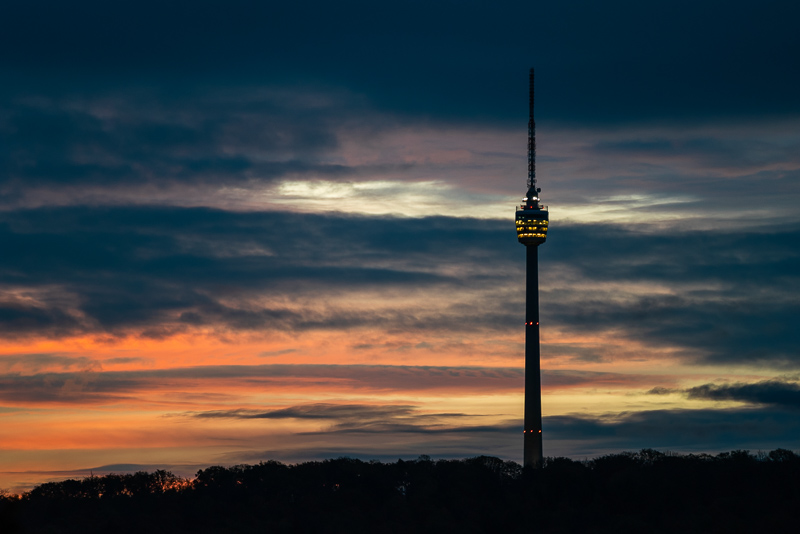


Further Reading
- Guide to Ultra Wide Angle lenses for the A7 Series
- Review: Laowa 2/105 STF
- Review: Voigtlander 4.5/15 E
Support Us
Did you find this article useful or just liked reading it? Treat us to a coffee!
![]()
![]()
![]() via Paypal
via Paypal
This site contains affiliate links. If you make a purchase using any of the links marked as affiliate links, I may receive a small commission at no additional cost to you. This helps support the creation of future content.
The Team
Latest posts by The Team (see all)
- November / Black Friday Deals 2025 - November 19, 2025
- Sony FE Lenses: The honest Guide for the A7/A9/A1 Series - March 18, 2025
- Guide to best Sony E-Mount 35mm Lenses for A7/A9/A1 series - March 8, 2025


















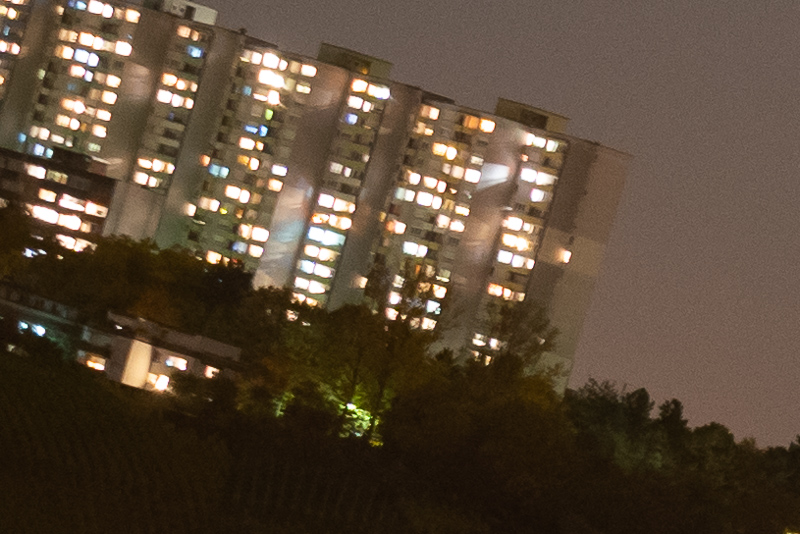
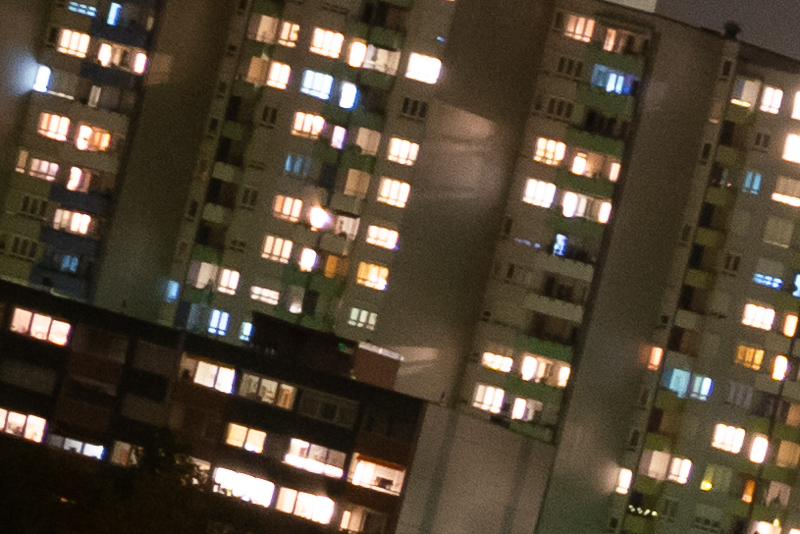


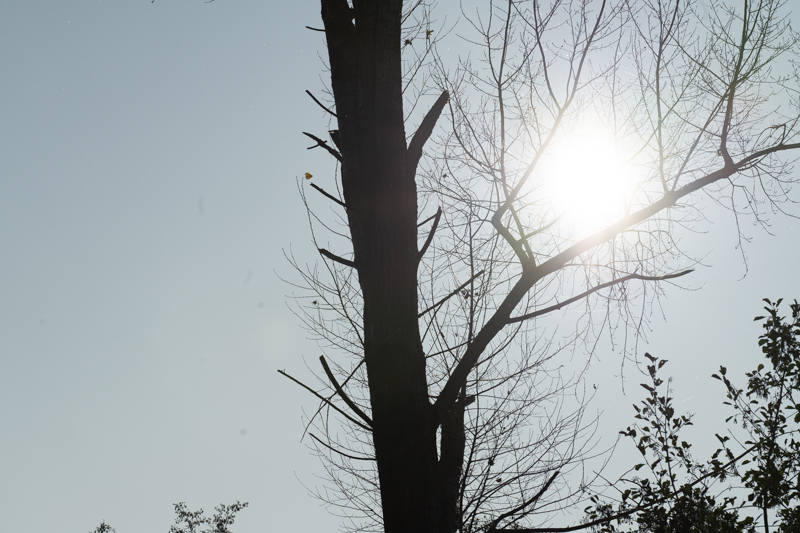














Very useful review, thanks! I’d actually been eyeing the Batis 135/2.8 as a travel tele for a while, but I kept thinking this Tamron was just a more practical choice, certainly more versatile… The comments about the Tamron’s performance at 135mm have me leaning back towards the lighter Batis w/OIS tho.
I own both. I find that I almost never reach for the Batis, previously my favorite lens, my more. On the A7iii the Tamrorn is really close to as good and so much more versatile. I have but don’t love the Tamron 28-75. I love the 70-180. I had had an older 2.8 tele when I shot Nikon and hated the weight. Not so with the Tamron. The size is amazing.
Interesting, thanks for sharing! I keep waffling back and forth, I have a tiny 150mm equivalent prime on M4/3 (Olympus 75/1.8) that I love shooting with for both people and landscapes, and it crops pretty well… So I’ve been kinda looking for something that could replicate that on my A7R IV, nothing short of a slower vintage 135mm is gonna be as small/light as that M4/3 lens but the Batis caught my eye since it’s “only” 600g, has OIS, and I can quickly go into crop mode for 27MP @ 200mm…
But yeah it’s hard to argue against the versatility of a zoom. I had a 70-200 f5.6 equivalent on M4/3 that I really enjoyed for events, but when shooting more generally I preferred the 85 & 150mm equivalent primes, hrm… How is the view thru the EVF @ 180mm using Sony IBIS w/o OIS?
Have you already decided wäre to pur your money? I am ausklingen Maskerade the same question. The lens I miss most since Ma switch from MFT to Sony is the Oly 75, really a little gem. As an ex-MFT user I am of course still very sensible regarding size and weight of leises. Therefore my current setup consists of AF prime lenses from 20 to 85mm only. And I added the Canon FD 135/3.5 after reading the review here. That is a nice little lens that performs very well especially for landscapes when I am hiking but also for portraits. I tried also the Samyang 135/f2 which also performs very well optically, but ist is quite big and heavy . And with two little children AF is always a most welcome feature. So, it is a bit of a dilemma. Currently I am considering the Batis 135 (used Price seem fair now) as well as the Tamron 70-180 but both of them do not evoke a partcular losging in me – still having the Oly 75 in mind.
I haven’t bought anything longer than 75mm for my Sony either, still thinking about the Batis 135 but will probably wait until I can travel again and use some of my current gear some more before deciding. Right now what I end up doing most of the time is throwing the GX850 into my bag along with the A7R IV, most of the time I pair the former w/the 42.5/1.7 & 75/1.8.
Altogether that trio doesn’t weight much more than the Batis does, and ends up taking a similar amount of space in my PD Sling as well so… Plus I can mount the Samyang fisheye on that body too, or swap in the 35-100 f4-5.6 and mix things up with the Samyang 75/1.8 for the Sony body. The other 2/3rds of the space in my bag is for the Sony and my wide/UWA lenses.
I’ve thought about trying both of the lenses you mentioned, the Samyang & Canon 135, but I dunno if I’d be happy with their AF… Honestly the Oly 75 is just hard to replace. I love that it’s so inconspicuous if I take it to a concert or event, and I can even have it mounted on the GX850 and hung on the outside of my bag on a PD Capture so it’s a quick reach.
Having that small body has gotten me a lot more use out of my M4/3 teles…
Had the same thoughts. I bought the tamron instead. Such a nice and light lens. Very useful Zoom range.
Excellent, thorough review!
Thank you very much
Thank you for long-waited review!
I think, you’ve made a mistake here: “it offers a noticeably higher maximum magnification at the 70mm end (1:5.2)”
According to official specs, in MF mode it’s 1:2.
You are right, in the spec sheet at the top it was correct, in Sharpness close section it wasn’t.
FE70-200/4 has not listed big advantage – internal focus. For some this may be more important than f2.8.
But it’s good that this tamron has lock button, it lacks in theirs 70-300.
Any plans on doing the 70-300? Seems like they really cut the features down in favour solely of price, weight and optical quality.
Rather unlikely at the moment.
Thank you for the review. What about the lack of OSS ? Do you notice a huge difference comparing to Sony 4/70-200 when shooting hand held ?
OSS is better with tele lenses than IBIS, but the difference is not that big at 180mm and the 70-200 is simply not a great lens, therefore I would easily pass on that.
The Sony 4/70-200 has a very inefficient OSS. In my testing it made a difference of just two stops when other manufacturer‘s lenses compensate 4 to 5 stops. So you don‘t miss much.
…unless you use an Alpha-7 Mk.I
One of my acquaintance(professional photographer) pointed out the cheap and plasticky look of Tamron 70-180 2.8 is not adequate for his line of work. I don’t care about his care, and don’t want to argue about his judgement, but I was surprised when I heard that. It was my first time seeing someone actually prefer more professional look over its better price performance ratio or absolute performance. He is still renting 70-200 2.8 GM for that.
Eventually, I would get the Tamron 70-180 when the situation become better. Thanks for the review and hope you guys find more luck in this year.
I remember Roger Cicala mentioniong that 2.8/70-200s in general have a bad rental weeks/repairs ratio but that the GM’s ratio was again much worse than that of other manufacturers. So I wouldn’t be surprised that the Tamron, despite the cheaper feel, would be less likely to fail your acquaintance.
Actually he was complaining about the condition of his rented GM 70-200 2.8. He says most of them are badly (optically) aligned and some of them had a lot of play of the mount. I guess it is an universal problem. Maybe not just its look, but his “muscle memory” or ease of use make him to use the GM. I was overlooking the fact that he is a professional, unlike me, he can’t miss his chance.
Lighter/plastic doesn’t always mean a cheaper build or more fragile IMO… It’s entirely possible that the Tamron despite being a pumper zoom would actually hold up as well or better simply because it’s lighter and there’s smaller forces at play. OTOH I can understand pros and people in adverse conditions preferring the internal zoom rather than the extending barrel. Less likely to suck in water/dust, more predictable when maneuvering with it, etc.
As a rank amateur I’d never travel with any of the traditional 70-200s, I don’t think I’d even enjoy using them in general, I might go for the Tamron tho… I’m a little jealous of the collapsible 70-200 Canon RF models (the f4 particularly), those are even smaller than the Tamron IIRC. Pros are gonna have to get over their preference if they intend to shoot Canon RF… 😡
When you’re a pro, it’s important to look like a pro to the people who are paying you. How fancy your equipment looks contributes to the impression clients have of you, and that contributes to whether they recommend you or hire you again.
Bastian, I hope you’ll get better soon
Thank you very much!
After 8 weeks I got rid of the cast on Dec. 30th, we are getting there.
Thanks for the review. I was wondering what is your take on the colors, i ve seen some complaints about warm or yellow rendering. I m not an expert but the one i got did have this color biais and i returned it because of that. It can be change in post but i thought it was a bit annoying ( and i thought the yellow rendering was not stable, so a pre set to colder balance was not possible.). Basically some white walls looked yellow to me. Have you noticed the same?
I brought the lens a couple of months ago and I love it, just this weekend I put it through a quite demanding test, untracked imaging of the Orion nebula, shooting 1 sec exposures at f2.8…and it performed really well, no coma, good colours, was easy to manual focus and even pointed close to straight up at 180 mm the lens stayed solid, the zoom didn’t slip at all. Very happy and makes me wonder what images the lens might produce if combined with a star tracker…hmmm, need more money…
https://www.facebook.com/photo?fbid=3720078491363813&set=a.411332442238451
I bought the lens right when it was available at amazon DE.
But since then I had weird issues with it’s focus abilitys.
First copy couldn’t achieve focus when the subject was more than 30-35m away from me (AF & MF).
second copy from Amazon also feels weird regarding focus.
I can’t focus on things that are “far” away (very useful tele 🙁 ).
It seems that the lens simply isn’t made for me – or I am to stupid to focus a tele lens.
Hopefully sigma launches it’s 70-200 soon
Amazing review as always! I have been using a Contax 80-200 f4 lens since I wanted a smaller lens, looks like it’s finally time I upgrade!
Also was curious if you will be reviewing the new Tamron 70-300 f4.5-6.3. Not in the same range as this one but looks like a decent option for anyone who doesn’t need the 2.8. Would love to know your thoughts!
Sorry to say, but I see blurry pictures only and this is exactly the experience which I have made during my test of the Tamron 70-180 last week. I sent back the Tamron although my copy seems quite better in sharpness as the pictures shown above. For a price point of more than 1000 Euro I expect better results. Am I expecting too much?
I do not think the lens was the issue here.
I bought a copy of 70-180 a month ago and found its strange behaviour – it shifts focus plane so the right part of an image is usually blurred while the opposite one is tack sharp. It’s very noticable at 100-135mm zoom setting and prominent even at f/5.6. Tamrone service center confirmed it has an issue with one of electromagnetic drive units that seems not equall to others so it shifts the focus module in a wrong manner resulting in blurred pictures. In manual mode it still noticable but to a lesser degree.
Here are examples:
https://disk.yandex.ru/d/xsNGUEU8SkhxZw
https://cloud.mail.ru/public/6f3k/NwGbvu4NV/
Does anybody find the same issue with your units?
Yes, I noticed that the right side of the images in the same range being very soft, while the centre and left were tack sharp. What is peculiar is that the right side was tack sharp for the first 6 months of owning the lens, but went soft all of a sudden.
check the serial number on Tamron website, some earlier lenses had problems with their floating element system and Tamron will exchange for free.
Hallo. Ist es normal das im objektiv etwas klappert wenn die Kamera ausgeschaltet ist. Wenn ich die Kamera anschalte bewegt sich im objektiv nichts. Vielen Dank!
Ja, ist normal.
Danke!
In der Überschrift und teils auch im Text steht fälschlich „VXD“.
Wäre ja schön, wenn es so eine zweite Version geben würde, wie beim 28-75, ist aber (noch?) nicht so.
I am product photographer and looking for tele lens 70-200 range for product photography in studio. I have 55mm and 90mm sony lenses. Sometime when I shoot tiny products longer focal length is needed above 100mm.
And I mostly shoot at f8-f11and f16 sometime.
Which lens you recommend?
Tamron 70-180 is good for that kind of work?
Thanks
Do you need AF?
If not I might rather get a 150-180mm macro lens.
The Sigma 150mm 2.8 is a great performer and very cheap on the used market.
I still use a Nikon F version for all the product shots in the reviews here.
Another option to consider for serious product photography are the Canon TS-E 90mm f/2.8L Macro and the TS-E 135mm f/4L Macro lenses (both native 1:2 macros). While being primes and MF only they have superb optics and allow you to tilt the plane in focus.
Imagine taking an image of a product thats surface isn’t (or shouldn’t be) oriented parallel to the plane of the sensor. To get the whole surface in focus you either need to stop down to rather extreme levels (maybe introducing softness due to diffraction), have to use focus stacking, or have to tilt the plane in focus. The latter can be achieved by using T/S lenses and allows you to still have blurred out surroundings in your images without the need to blend different images together as you simply don’t need to stop down that much — with a flat surface you may even be able to shoot still wide open.
While being extremely sharp and well corrected those lenses still have one significant downside: their steep price tag.
The 135mm would be close to your desired range and adding a 1.4x TC would get you a 189mm f/5.6 Macro with 0.7x magnification.